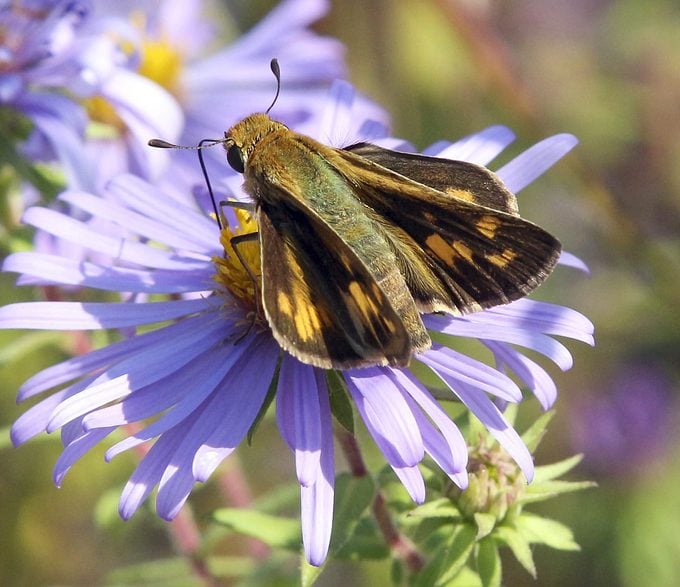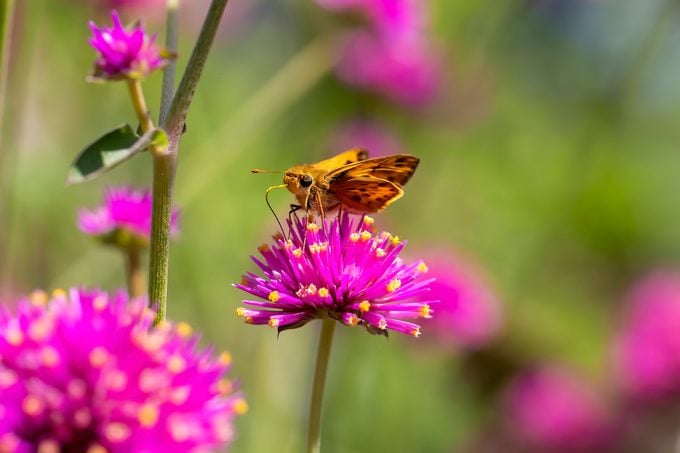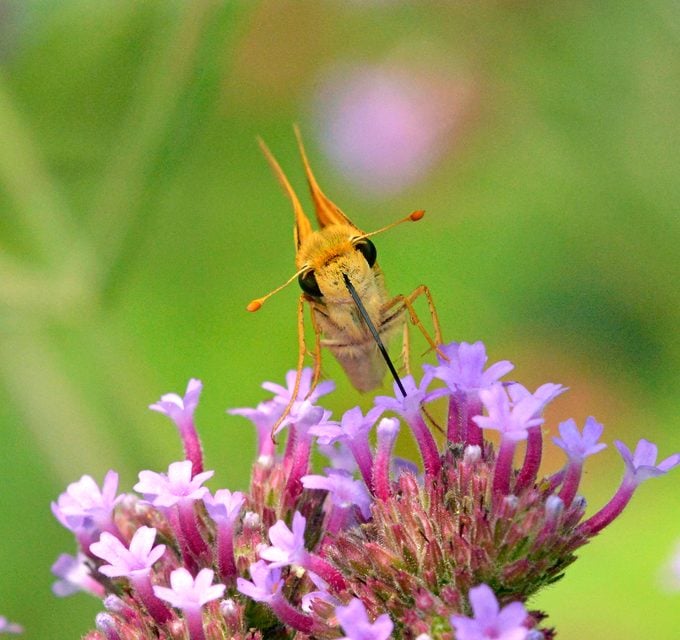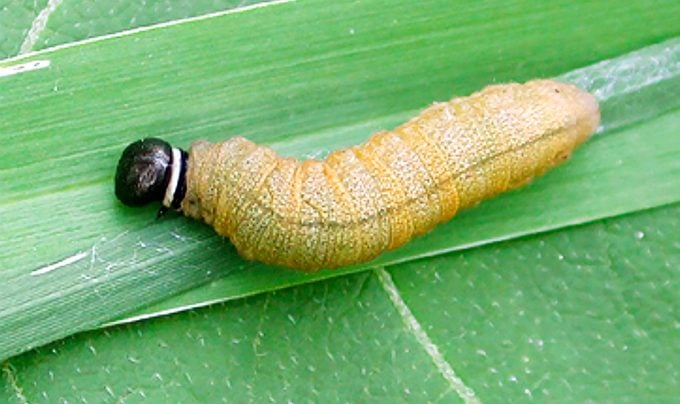Meet the Tiny Fiery Skipper Butterfly
Updated: Apr. 16, 2024
Meet the fiery skipper: one of the smallest butterflies in the skipper family. Plus, learn about fiery skipper caterpillars and host plants.
On This Page
What Does a Fiery Skipper Look Like?

A female fiery skipper has dull orange and dark markings, while males sport a slightly brighter orange, and dark, uneven borders. If you’re able to get close enough to spot the butterfly’s antennae, look for short antennae with knobby ends.
Meet more members of the vast (and fast!) skipper butterfly family.
Is a Fiery Skipper a Butterfly or a Moth?

When you’ve found a skipper, you might first think it’s a moth. “Though they’re part of the butterfly family, they have characteristics of moths, too,” says Birds & Blooms contributor Jill Staake. “Many scientists consider them a sort of ‘in-between’ insect.”
Jill also notes that a good way to tell whether you’ve found a skipper is to observe its flight pattern. “They all fly very quickly, ‘skipping’ from flower to flower with a darting flight pattern,” she says.
While skippers are among the smaller butterflies, this subspecies is tiny—even for a skipper. As Jill explains, two common skippers in the United States, the silver-spotted and the long-tailed, have wingspans of up to 2 1/2 inches. The fiery, on the other hand, has a wingspan of 1 to 1 1/2 inches.
Fiery Skipper Range and Habitat

These slight butterflies are commonly found in the southern United States, as well as Central and South America. They visit the northern United States during summer, and tend to depart once the first frost sets in.
“Fiery skippers can’t tolerate harsh winters, so they live year-round in the southern areas of the country and expand their population north during the spring and summer months,” Jill says. “They overwinter as pupae in the leaf litter, emerging in spring when the first wildflowers begin to bloom.”
Butterfly enthusiasts can find them flitting across fields, flower gardens and roadsides. “They’re really common in summer in much of the country,” Jill says, “especially in suburban areas because their caterpillars feed on the types of turf grasses people usually use in their yards.”
Meet more small butterflies you should never overlook.
Host Plants and Caterpillar

As Jill mentioned, these tiny skippers lay their pearl-like white eggs on grasses, including Bermuda grass, crabgrass, and St. Augustine’s. Caterpillars eat the grasses as they grow and even use the grass to form a shelter. Caterpillars roll and tie grasses with silk.
There’s little doubt when you’ve spotted a fiery skipper caterpillar. Initially greenish, the caterpillar eventually morphs into brown with a long, darker stripe down its back and several fainter stripes. A large, almost black head area is noticeable.
Here’s how to grow native ornamental grasses for butterflies—especially skippers.
About the Expert
Jill Staake‘s lifelong love of nature turned into a career during the years she spent working with native Florida butterflies, caterpillars, and other wildlife at the Museum of Science & Industry in Tampa, Florida. During this time, she helped to maintain 30+ acres of gardens and backwoods, all carefully cultivated to support the more than 20 species of butterflies displayed indoors and out. She now writes for a variety of publications and sites on topics like gardening, birding, and education, among others.
Sources
- Missouri Department of Conservation, “Fiery Skipper”
- Entomology Department: University of Florida, “Fiery Skipper”
- Butterflies and Moths of North America, “Fiery Skipper”
Why Trust Us?
For nearly 30 years, Birds & Blooms, a Trusted Media Brand, has been inspiring readers to have a lifelong love of birding, gardening and nature. We are the #1 bird and garden magazine in North America and a trusted online resource for over 15 million outdoor enthusiasts annually. Our library of thousands of informative articles and how-tos has been written by trusted journalists and fact-checked by bird and garden experts for accuracy. In addition to our staff of experienced gardeners and bird-watchers, we hire individuals who have years of education and hands-on experience with birding, bird feeding, gardening, butterflies, bugs and more. Learn more about Birds & Blooms, our field editor program, and our submission guidelines.






















